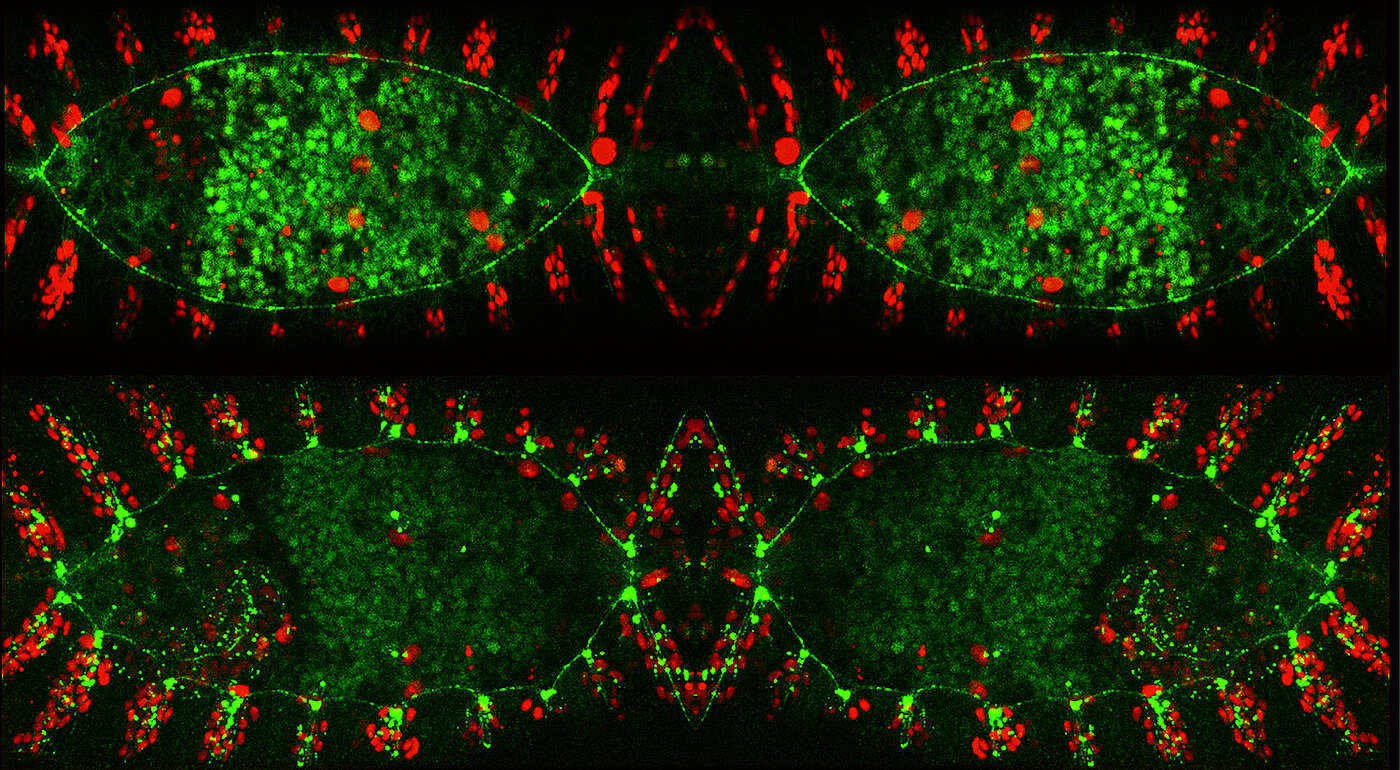Cells are the building blocks of all living creatures. In order to form a complex organism and stay healthy, cells need to communicate with each other and integrate the response within themselves. A group of enzymes, so-called protein kinases, play an important role in internal communication. As members of complex signaling networks, they regulate vital cell functions. Defective kinase networks can therefore have serious consequences, such as developmental disorders, cancer or immune deficiency.
More than 500 different kinases are currently known. Identifying the cellular processes in which they play a role remains very challenging. This is because a single kinase controls not just one, but multiple downstream pathways. The new approach of the team led by Prof. Markus Affolter from the Biozentrum of the University of Basel helps to better understand the network jungle. The work has recently been published in the "Journal of Cell Biology".
Targeted synthetic kinases
Kinases work as a courier service, delivering messages in the cell. By attaching a phosphate group to their recipient proteins, they send messages with instructions on what the cell should be doing at any given moment. "Most kinases, however, have many more than just one recipient," says first author Dr. Katarzyna Łepeta. This is problematic as overlapping effects produce incredibly complex responses.
"Our engineered kinases are designed to target only a chosen recipient protein," says Łepeta. "Thus, we are able to activate a single target protein of a certain kinase. In other words, a group chat becomes a single chat." With their new tool, the researchers can pick a specific signaling pathway and investigate in which way it directs the development and function of cells, organs or entire organisms. The researchers could successfully evaluate their novel method in fly embryos using advanced microscopy techniques.
Better understanding of cell communication lanes
"The principle of our approach is quite simple. We couple the kinase to an antibody fragment, a so-called nanobody, which exclusively recognizes and interacts with the tagged recipient protein," explains Łepeta. "Our technique channels the signal and thus activates only one pathway of the intricate kinase meshwork." This engineered substrate selectivity allows the researchers to better understand single communication lanes and their role in the development of organisms and complex diseases such as cancer.
The future goal of the scientists is to design target-specific synthetic kinases that can be switched on or off chemically or with light. This will further improve the tool’s performance and application. And finally, synthetic enzymes could generate completely new signaling routes inside the cell.
Original publication:
Katarzyna Łepeta, Chantal Roubinet, Milena Bauer, M. Alessandra Vigano, Gustavo Aguilar, Oguz Kanca, Amanda Ochoa-Espinosa, Dimitri Bieli, Clemens Cabernard, Emmanuel Caussinus, Markus Affolter. Engineered kinases as a tool for phosphorylation of selected targets in vivo. Journal of Cell Biology; published online 14 September 2022
Contact: Communications, Katrin Bühler



